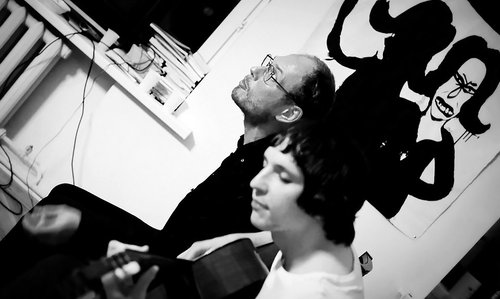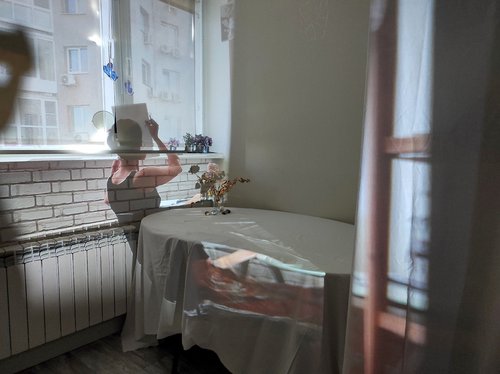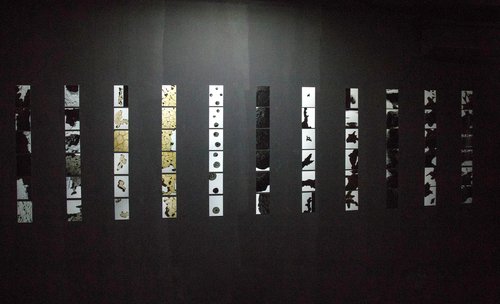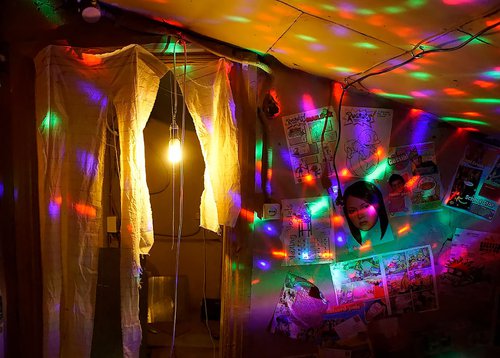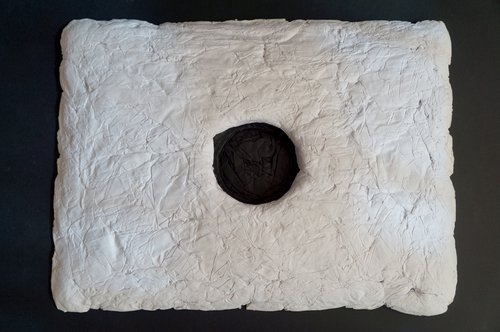No Sign on the Door: Art in Moscow Goes Underground
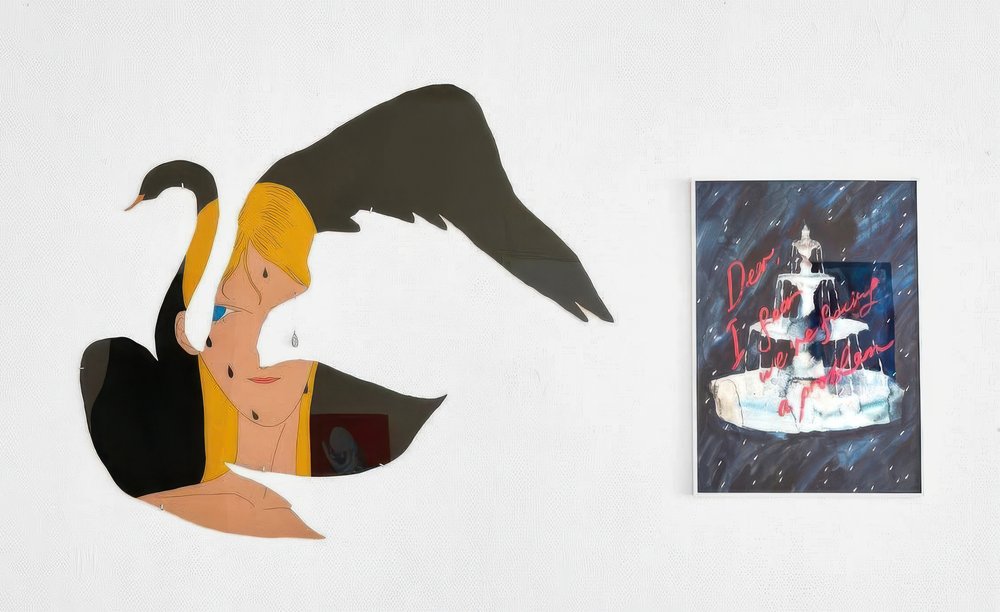
Perfect Blue. Exhibition view. Moscow, 2025. Courtesy of Madame artist-run space
With state institutions withdrawing from contemporary practice – programmes paused, venues closed – Russia’s art community has migrated into private rooms and improvised galleries. These self-organised exhibitions now function as laboratories of freedom, where artists test ideas that no longer fit within official frames.
Contemporary art was in vogue in Russia in the 2010s. It was welcomed in national museums, with the government supporting local initiatives. This is unfortunately no longer the case. Major state-funded museums have almost entirely removed contemporary art from their programmes. In the Russian capital, the only two city institutions that still regularly exhibit living artists are the Moscow Museum of Modern Art and the Multimedia Art Museum. International biennales in Moscow and Ekaterinburg have ceased to exist and the chain of National Centres for Contemporary Art has dwindled to just two branches, both of which are located far from Moscow. Even private institutions are starting to feel the pressure.
In October 2025, the independent Fabrika Centre for Creative Industries, a well-known art hub comprising exhibition halls, artist studios and rental office spaces, received an eviction notice from the Moscow city authorities. The land on which the centre is located is to be cleared of all existing buildings and used for a residential development. Contemporary art is essentially being pushed to the margins. New private museums, such as the spacious, glamorous, five-storey Kollekzia, which is scheduled to open in December, or the small, intimate Maslovka Museum, cannot fill the gap because their programming depends heavily on the tastes of the owners and their existing collections.
Artists who have lost faith in institutions are responding by taking matters into their own hands. Self-organized exhibitions in private apartments and studios are becoming increasingly common in the Russian capital. While some are supported by small businesses and collectors, many more are entirely self-funded. Such exhibitions are open by appointment only and are advertised on Telegram, the last major international social media platform not yet banned in Russia. Unlike in the Soviet era, when the worlds of official and unofficial art were clearly separated – with Socialist Realism prevailing in official venues and all kinds of experimentation thriving underground – the situation today is different. The same artists eagerly showcase their work in both apartment exhibitions and major museums. For example, painter Julia Kartoshkina (b. 1985), who has recently curated a group exhibition called ‘Talking copy’ in the basement studio of her friend, the artist Irina Motorina, says that it is a first step towards an institutional show. Over forty artists took part in the exhibition, paying homage to great masters of the past ranging from Dominique Ingres (1780–1867) to Erik Bulatov (b. 1933), as well as to their own peers. For example, Roman Sakin (b. 1976) painted an 'artwork by Irina Korina' (b. 1977) that he saw in a dream. “I chose to do it in a studio because the atmosphere here is great; it feels like home. But this is just the first part of the exhibition; the second will be held in a museum or gallery,” Kartoshkina told Art Focus Now.
Unlike state museums, which are often plagued by censorship, small, independent venues allow more freedom in choosing subject matter. Zayka (Bunny) Space on Tverskaya Street, a short walk from the Kremlin, regularly exhibits nudes — a subject that is now frowned upon in major Russian institutions. Located in a converted flat that serves as an architectural studio office a few times a week, Zayka first opened a year ago with an exhibition celebrating the female body. The works of art came from the private collection of Zayka’s co-founder and curator, Pyotr Mityushkin, who focuses primarily on female nudes. To celebrate its first anniversary, Zayka held an exhibition of male nudes. Most of the works were loaned by artists, but a few were commissioned for the exhibition, including an impressive silhouette painting by Katya Ulitina (b. 1982), reminiscent of Matisse and Ancient Greek vases and a large four-piece polyptych by Max Orlitsky (b. 1982). Zayka’s other co-founder, architect Julia Napolova, is well known for designing exhibitions for large private and national museums. For both founders, networking rather than sales is their primary goal. “For us, Zayka is primarily a place for socializing and gatherings of Moscow’s creative intelligentsia, a place where we can relax, have fun and try new things,” Napolova said when asked about the initiative. “It is important for us to show the right kind of art to our friends and their friends – the kind we love ourselves,” added Mityushkin.
Artists and siblings Natalia (b. 1959) and Maria (b. 1968) Arendt decided to transform their grandparents’ sculpture studio, which was filled with plaster statues and bronze busts by Anatoly Grigoriev (1903–1986) and Ariadna Arendt (1906–1997), into a cultural space called Arendt&Co. Starting last month, they are now inviting artist friends to create installations in the studio. Irina Korina was their first guest artist, who created abstract sculptures made of playdough especially for the venue. “This studio is unique, and we want people to see it,” explains Maria Arendt, citing the Sir John Soane Museum in London, with its dense and quirky collection of sculptures and ancient artefacts, as an inspiration behind their project.
There are a few contemporary art galleries promoting an exclusively feminist agenda, also considered outside the mainstream by state-funded Russian museums. They only exhibit the work of female artists (although fortunately male visitors are not banned from entering!). The first ever female-only apartment gallery, Murmure, was in the home of its founder, Katya Kartseva, an art journalist and university lecturer. However, after experimenting with the apartment exhibition format for a couple of years, Kartseva decided to move her exhibitions to a nearby framing shop – a more convenient arrangement for both visitors and herself. The newest addition to the feminist art scene is Madame, an independent art space founded by artist Daria Arbuzova (b. 2001) and curator Maria Anikina. Located in a converted flat on Bolshaya Nikitskaya, a few steps from the Kremlin, Madame consists of two large rooms. The inaugural exhibition, ‘Perfect Blue’, featured works by Irina Korina, Sacha Puchkova (b. 1989) and Malyshki 18:22 artist duo, as well as several lesser-known artists. Inspired by American author Maggie Nelson’s book ‘Bluets’, the artists used the colour blue to reflect on personal traumas. “We showcase art that isn't afraid to be personal, nonlinear, anxious, ironic, and, at the same time, aesthetic, fragile, daring, archival and digital. It is a place for artistic feminism without reservation – flexible, contentious and alive,” Arbuzova told Art Focus Now. According to her, the goal of the new initiative is to unite female artists and writers and create “a new field for discussion”.
Former ZIP group artist Eldar Ganeev (b. 1977) is holding exhibitions in his basement studio at Fabrika. He has named this impromptu art space ‘Unovis-2’ in homage to Malevich (1879–1935) and his UNOVIS (an acronym for ‘Founders of the New Art’) association and school in Vitebsk. Much like Malevich’s renowned, but short-lived institution, it is a space where young artists can experiment, showcase their work, and meet their peers and more established colleagues. Currently, an exhibition of inventive high-tech and low-tech artworks is on display, all of which are united by a single trait: they all require electricity to function. It is called ‘Art is in Order, Thanks to the Charger!’. Some of the participants are students from the Free Workshops art school run by the Moscow Museum of Modern Art, where Ganeev teaches. Unfortunately, it seems that this initiative is also likely to be short-lived, as the Fabrika Centre for Creative Industries has been ordered to close by the Moscow mayor’s office. Who said that swimming against the current would be easy?
Zayka space
Arendt & Co
Murmure
Madame
Instagram belongs to Meta, declared an extremist organization by Russian authorities.












